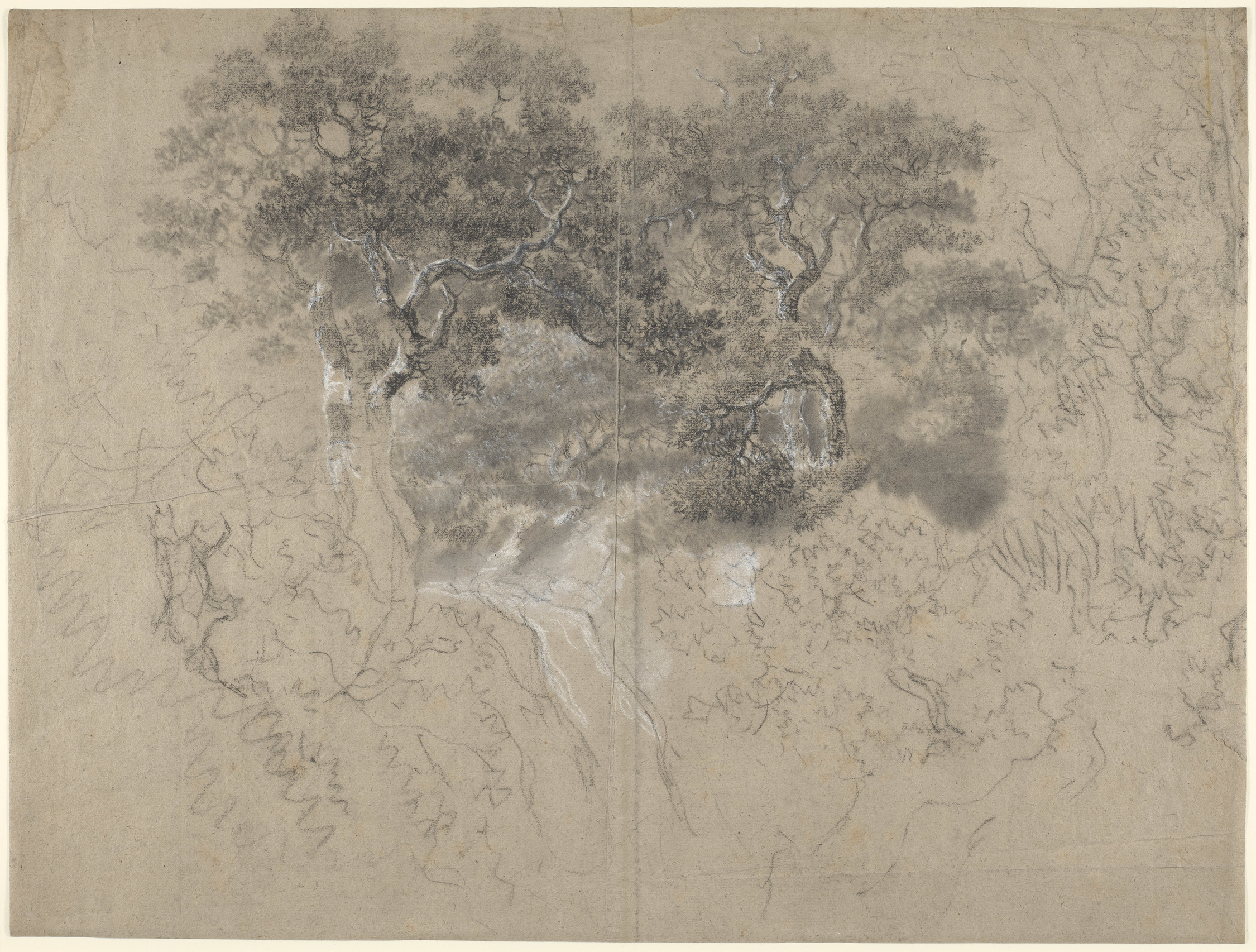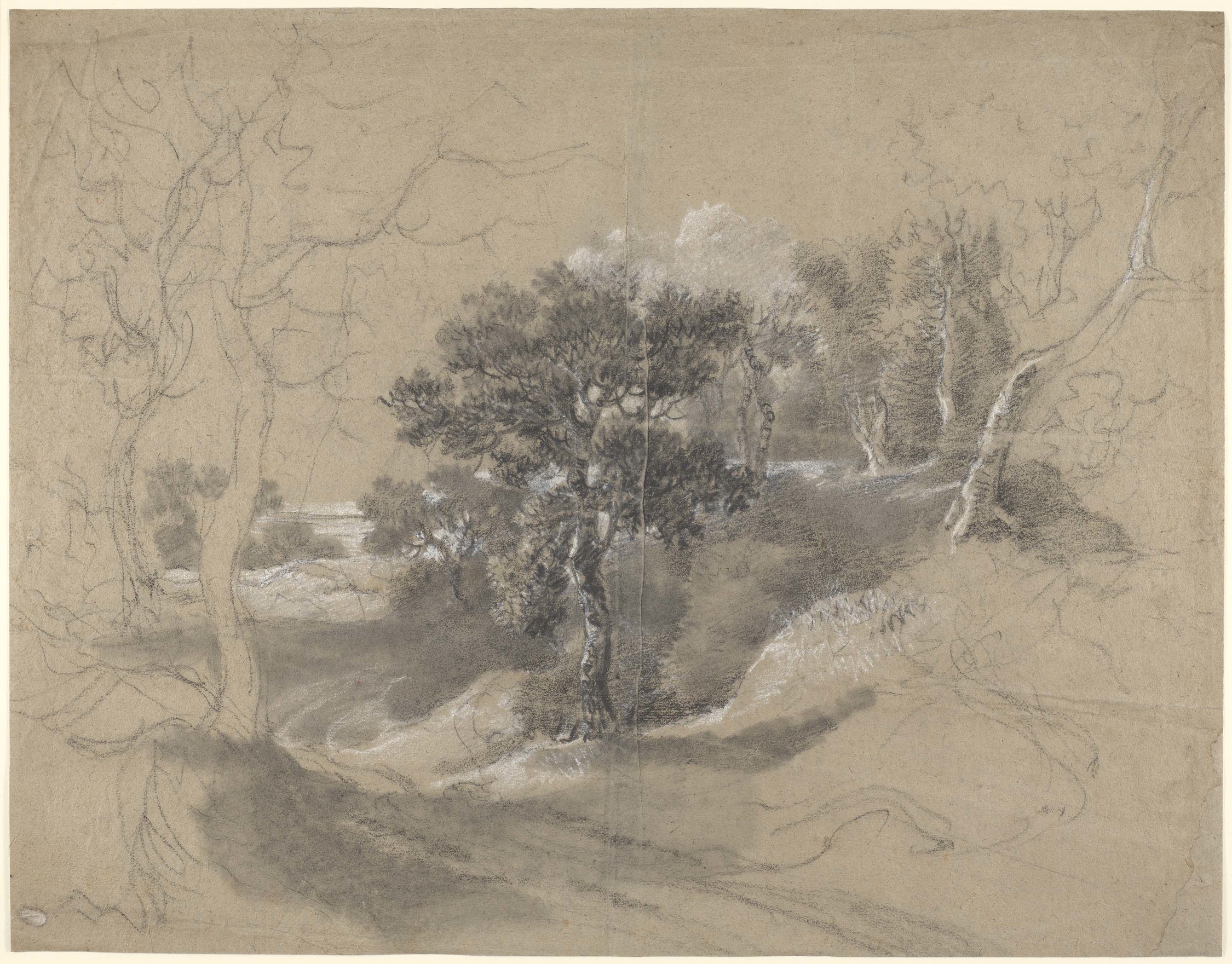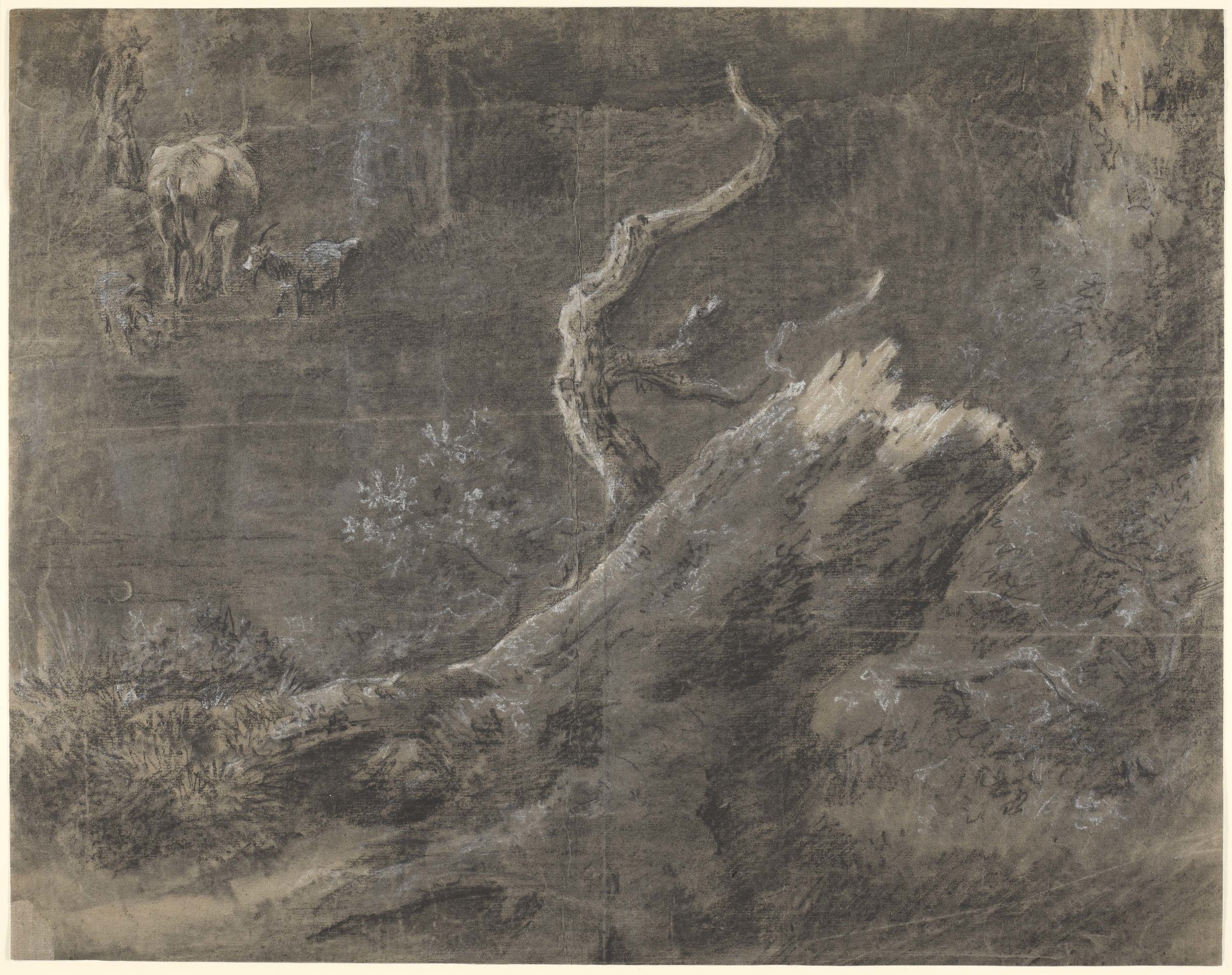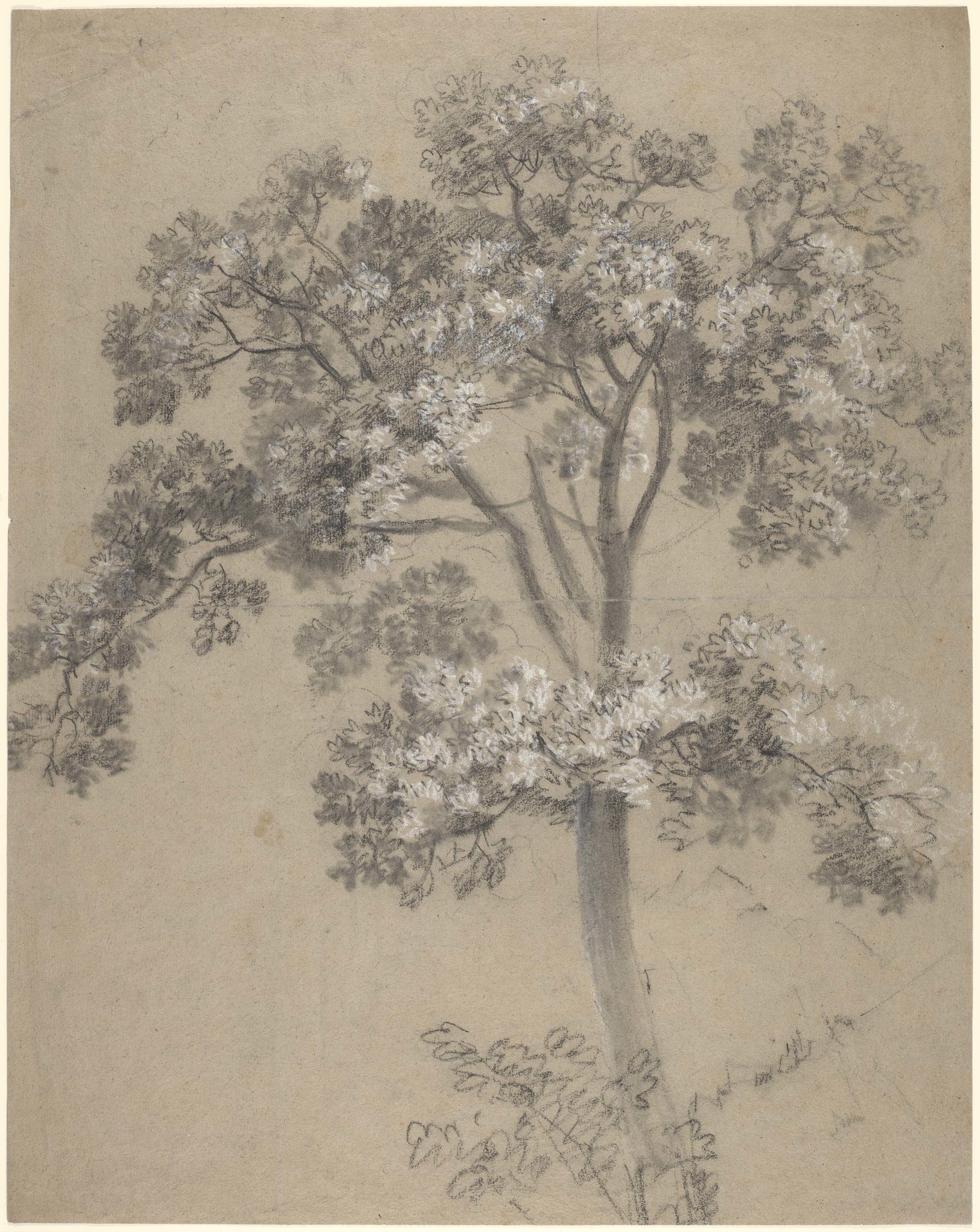
Drawing in the Open Air
The Suffolk ploughmen often saw him in the early morning, sketchbook in hand, brushing with hasty steps the dews away; and lingering in the golden light of evening, taking lessons from the sunset cloud
Sketching in the open air (often known by its French term en plein air) is frequently idealised by artists’ biographers to conjure the romantic ideal of an artist close to nature, but Gainsborough really did pack up his drawing kit and venture out into the Suffolk countryside to make drawings directly from the landscape.
Gainsborough drew both in small, portable sketchbooks and on larger sheets of paper, pinned to a drawing board. Pin holes can be found in the corners of several of the newly discovered sheets.
Some of Gainsborough’s plein air drawings reveal his working process. He started by drawing the outlines of trees and foliage in black chalk, before working up some areas in more detail. These studies record the patterns of banks of trees and foliage, as well as the fall of light in white chalk. In a letter to a friend, he wrote that loose drawings of this kind were intended ‘merely to free your hand … there must be truth of hand, as well as freedom of hand in Drawing’.
In other drawings that Gainsborough made out in the countryside, he made careful studies of specific trees, plants, or animals. Drawings like these would assist his understanding of every detail, and would serve as a stock of motifs to refer to and incorporate into his paintings.











